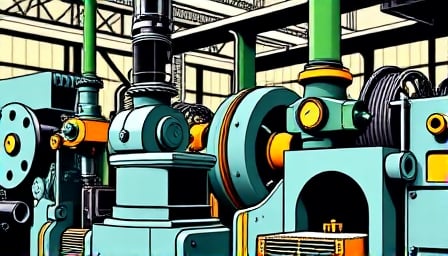SMT Scharf AG: A Critical Look at the German Industrial Giant
In the bustling industrial sector, SMT Scharf AG stands as a notable player, yet recent developments and financial metrics paint a picture that demands scrutiny. As a German company based in Hamm, SMT Scharf AG has carved out a niche in designing, supplying, installing, and maintaining systems for the transport of personnel, equipment, and material. However, beneath the surface of its specialized operations lies a financial narrative that raises questions about its future trajectory.
As of August 20, 2025, SMT Scharf AG’s close price on the Xetra exchange was 8.1 EUR, a figure that sits uncomfortably between its 52-week high of 9.2 EUR and a low of 6.15 EUR. This volatility is not just a number; it’s a reflection of investor sentiment and market confidence—or the lack thereof. With a market capitalization of 45,280,000 EUR, the company’s financial health appears precarious, especially when considering its price-to-earnings ratio of 7.007. This ratio, while not alarmingly high, suggests that investors are cautious, possibly due to underlying concerns about the company’s growth prospects and operational efficiency.
The machinery industry is fiercely competitive, and SMT Scharf AG must navigate this landscape with precision and innovation. Yet, the company’s recent financial performance indicates potential struggles in maintaining its competitive edge. The fluctuating stock price and modest market cap suggest that SMT Scharf AG is not fully capitalizing on its specialized expertise in transport systems. Investors and stakeholders are likely questioning whether the company can sustain its operations and growth in an industry that demands constant technological advancement and strategic foresight.
Moreover, the broader economic environment cannot be ignored. As industries worldwide grapple with supply chain disruptions, rising costs, and shifting market demands, SMT Scharf AG must adapt swiftly. The company’s ability to innovate and streamline its operations will be crucial in determining its future success. Failure to do so could result in further financial instability and a potential erosion of its market position.
In conclusion, while SMT Scharf AG remains a key player in the machinery sector, its recent financial indicators and market performance warrant a critical examination. The company must address investor concerns, enhance its operational efficiency, and embrace innovation to secure its place in the competitive industrial landscape. Only then can it hope to regain investor confidence and achieve sustainable growth.
